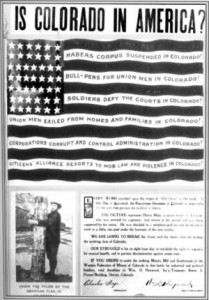Column by Hal Walter
Outdoors – August 2003 – Colorado Central Magazine
FOLLOWING THE MARKETING STRATEGY pioneered by today’s mainstream conservative media and other highly successful public-relations schemes, my friends at Bear Basin Pack Trips recently approached me with an idea. Perhaps buying some journalism about their new Sand Dunes pack trips would be more effective than advertising.
My friend Dan called with the idea of paying me to go along on a scouting mission with his partner West and guide Barb. Also along on the trip would be noted photographer Imke Lass whose photos have appeared in major magazines both in this country and her native Germany.
Although the idea was initially repelled by my sense of journalistic ethics, I realized that this was a nearly extinct notion in this day and age; plus, the chance to get paid for going camping is rare. I accepted the deal, which included retained rights to the story.
Bear Basin, based near Westcliffe, is the first and only outfitter to offer backcountry pack trips into Central Colorado’s national park — The Great Sand Dunes National Park and Preserve. This 84,000-acre natural wonderland was upgraded from National Monument status in 2000. With dunes rising 700 feet above the San Luis Valley floor and alpine peaks towering 13,000 feet above, the park and upper preserve comprise a wilderness unlike any place in the world, contrasting the splendor of this area’s high mountains with the softness of its sandy slopes.
I was allowed to ride my own burro on this trip, while the others had their trusty horses. Instead of packhorses we brought along a “pack truck,” which also served as the required “bear-proof container” for our food and garbage. This made things easy since we didn’t need packhorses.
The excursion embarks from Music Pass on the eastern slope of the Sangre De Cristo Range, following the rolling Rainbow Trail south. We skipped this part because we already know it well. Instead, we picked up the trail near where it joins Medano Pass, a four-wheel-drive road that leads over the Sangres to the dunes. While Barb, Imke and I rode over the pass, West drove the truck over.
We were traveling this route rather than over Music Pass and down Sand Creek because the park service has not yet finalized some sort of deal to secure a piece of private land that basically blocks the Sand Creek Trail from public access. According to my sources, this deal is to be consummated in the near future, at which point Bear Basin plans to lead its trips over Music Pass to the dunes.
However, the trip over Medano Pass has its own charm since it is believed to be the route explorer Lt. Zebulon Pike took in 1807. Only Pike was actually trespassing on Spanish soil at the time, and was later arrested in the San Luis Valley. The Spanish confiscated Pike’s expedition notes and held him prisoner at various locations in the Southwest and Mexico for several months before his release. As I looked at the sign on top of the pass noting our arrival in the Sand Dunes Preserve, I wondered how long it had been since someone had ridden an actual burro over this pass — perhaps not since the area was under Spanish control.
After crossing Medano Pass at 10,200 feet we descended to one of the developed campsites along Medano Creek. Here breath-taking views of tall peaks and rolling aspen forests abound in all directions and glades of aspens billow from the gentle slopes like some sort of bizarre green pillows. Until the aforementioned land deal is secured, Bear Basin’s plan is to set up a stationary camp that serves as a base for day excursions.
WE PITCHED CAMP before embarking on our first scouting mission up to Medano Lake, set in a high alpine cirque to the north of the main Medano Creek drainage. The ride from camp was to be relatively short but challenging, but we soon learned that it was actually impossible in mid-June due to large snowdrifts blocking the trail. It occurred to me that this was one of the few north-south drainages in the range, possibly explaining the lingering snow. We tried to skirt the drifts but ended up stymied and watching a herd of Rocky Mountain bighorns scramble across the upper flanks of 13,297-foot Mount Herrad before we returned to camp.
The next day was a scouting mission down Medano Pass. The six-mile ride to the dunes crosses Medano Creek nine times. My trusty mount Ace was unsure of the deep, high-sided crossings, and the first couple were struggles. Soon, however, he began to follow the horses through the fords. I alternated some hiking with the riding, though my friends on horseback seemed puzzled by my willingness to dismount and hike. Along the way numerous developed campsites were vacant, and we saw fewer humans than I generally see on backcountry trails.
We passed the remains of homesteaders’ cabins along the way; one of these sports a brick chimney and cement foundation measuring 30×24 feet — quite the size for a backcountry abode, considering the remote location. I later learned this is all that remains of the Ulysses Herrad homestead. Known locally as “Ulus,” and often seen riding a white mule, Herrad homesteaded along the banks of Medano Creek from the 1890s through the early 1900s.
Herrad’s operation included chickens, stocked trout in the stream and an extensive vegetable garden, as well as cattle and sheep, according to Carol Sperling, chief of interpretation and visitor services for Great Sand Dunes National Park. As the legend goes, Herrad traveled with a ram’s horn that he used as an ear trumpet after a mule kicked him in the head and left him profoundly deaf. Today a nearby peak is named in his honor.
The mountain flora gradually gives way from aspen and pine forest to ponderosa pines, scrub oak and cottonwoods along the creek bed. Wildflowers, including lemon-yellow American wallflowers, blaze-orange paintbrush, brilliant blue penstemen, and many others, dot the landscape in all directions. The terrain also gradually becomes more and more sandy as the approach from the Sangre de Cristo range reveals a rare view of the park.
THE LITTLE MEDANO TRAIL to the south skirts the dune fields where they rise up to meet the mountains, offering rolling vistas of North America’s largest sand dunes. To the north, the Sand Ramp Trail heads toward Sand Creek and the Star Dunes Complex, the least-visited section of the park. “Star dunes” are formed in areas of multiple wind directions. These multiple wind regimes create sand dunes with three or more arms. The shapes of these dunes constantly shift with the wind as the arms gain sand from different directions.
Riding through this zone where mountain foothills abruptly rise out of the sand conjures up ideas of what may have been in Zeb Pike’s confiscated notes about the early exploration of the area. The San Luis Valley skyline stretches above, and you can imagine the first explorers to travel this route may have expected to find the Pacific Ocean lapping at the other side of the dunes.
However, these vast mountains of sand were not made by an active ocean, but rather the wind sweeping across the alluvial deposits of an inland sea long since vanished. When the southwesterly winds hit the slopes of the Sangres, the grains of quartz sand were too heavy to pass and were deposited at the foot of the mountains.
As we entered the dunes there was a comical moment when Barb’s horse Rocky decided to roll in the sand. Unfortunately Barb was in the saddle and had to bail. A few moments later I realized Ace was trying to do the same thing. Despite my efforts to keep his head up, I also ended up bailing into the soft sand. How can you argue with something that weighs nearly half a ton and wants to roll in the sand?
The tallest peaks of the Sangre de Cristo range, including Crestone and Crestone Needle, loom to the northeast. On a clear day you may see the La Garita and Cochetopa mountains on the northwest horizon. The Mount Blanca Massif hangs over the dunes to the south, a lone spur off the southern end of the Sangre de Cristo range.
While Imke took more pictures, the mosquitoes began to gather and Ace and I seemed to be the designated lunch for the whining hordes. I strongly urge anyone who signs up for one of these pack trips to pack some sort of insect repellent — although that part won’t be included in the article that appears in the mainstream press. I finally headed back to camp, jogging along with Ace pack-burro-racing style, riding him only through the wide creek crossings. In a couple of these I saw rare Rio Grande cutthroat trout swimming ahead as if being herded through the shallows. And once two deer bounced just a few feet in front of us as I rode up on the opposite bank. I wonder what would have happened then if Ace were a horse. Of course, of course.
THE HOMEWARD JOURNEY was simply a reverse of the route that brought us there, but the scenery is no less spectacular. Views to the southeast include the Spanish Peaks and the plateaus of southern Colorado and northern New Mexico. The Eastern flanks of the Sangres spread out to the north and the Wet Mountain Range rises up to meet you in the east.
Crossing Medano Pass for the second time in a week offered time for reflection on the splendor and newfound knowledge of this unique Colorado ecosystem. I had only spent three days and Bear Basin’s trips will be five. For me the real adventure — that curious zone between journalism and public relations — still lay ahead. However, I could see how for the more urban and urbane this trip could be a truly wild experience.
Most importantly, I had the mental notes I would need for the article and nobody could confiscate them. Like Pike, I’d seen a side of the Great Sand Dunes National Park that few others have experienced. Unlike Pike, I was now free to return home to my normal life and write it up.
Hal Walter writes-it-up from his home and burro ranch in the Wet Mountains of Custer County.


